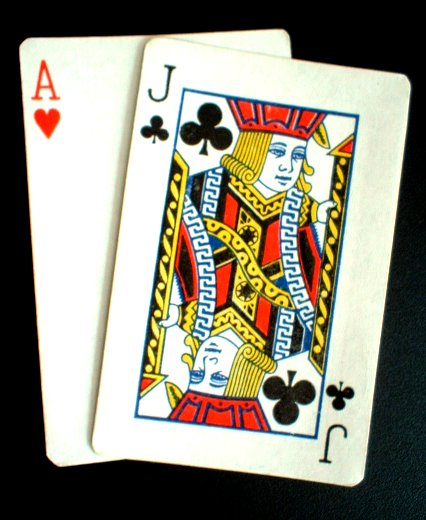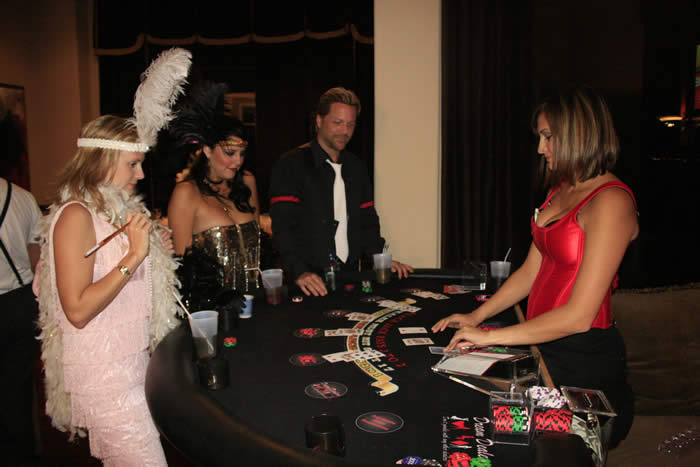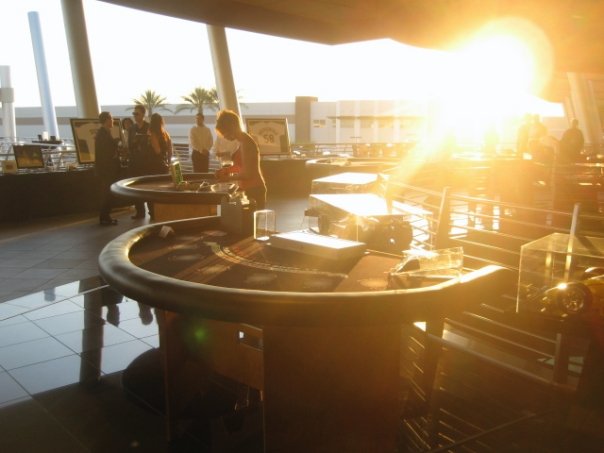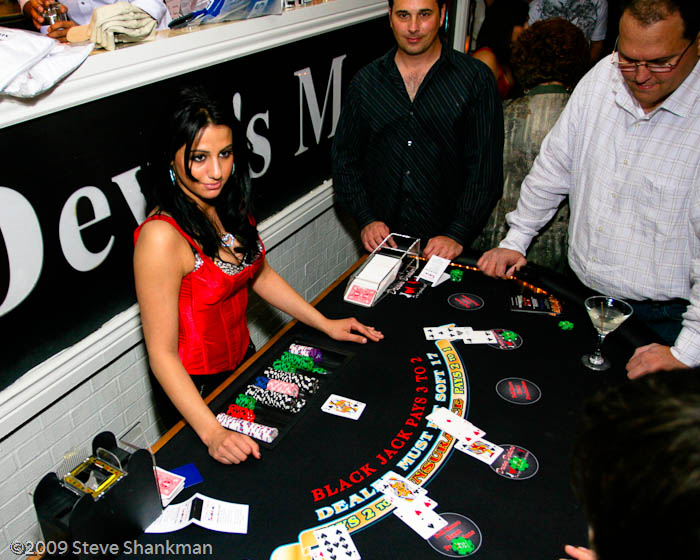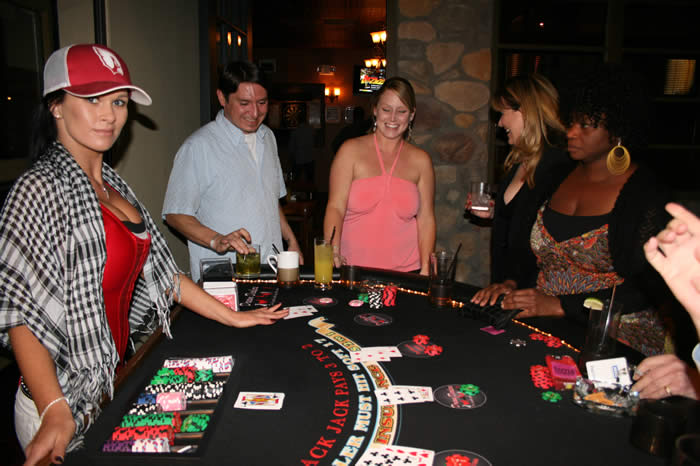Home | Casino Activities | Unique Opportunities | Dream Dealers | Events | Photo Gallery | Contact Us
Bookings: 480-236-ACES / Fax: 480-237-9486 / info@dreamdealers.com
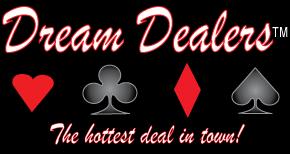 Blackjack Blackjack |
|||||||
|
Blackjack (also known as Twenty-one) is the most widely played casino game in the world. Much of blackjack's popularity is due to the mix of chance with elements of skill, and the publicity that surrounds card counting (calculating the probability of advantages based on the ratio of high cards to low cards). The Dream Dealer DifferenceTo optimize your casino party playing, every Dream Dealer table is equipped with an automatic shuffler for a six deck shoe. Your casino time is not wasted with manual shuffling and your guests spend more time playing rather than less time waiting. How to play BlackjackIn casino blackjack, the dealer faces one to seven players from behind a kidney-shaped table. Each player plays his hand independently against the dealer. At the beginning of each round, the player places a bet in the "betting box" and receives an initial hand of two cards. The object of the game is to get a higher card total than the dealer, but without going over 21 which is called "busting" or "too many." (The spot cards count 2 to 9, the king, queen, jack, and 10 count as ten, while an ace can be either 1 or 11.) The player goes first and plays his hand by taking additional cards if he desires. If he busts, he loses. Then the dealer plays her hand. If the dealer busts, she loses to all remaining players. If neither busts, the higher hand total wins. In case of a tie, no one wins -- the hand is a "push." It is possible for the dealer to lose to some players but still beat other players in the same round.
Cards are dealt in two ways, either from one or two hand-held decks, or from a box containing four to eight decks called a "shoe." When dealt by hand, the player's two initial cards are face-down, while the dealer has one face-up card called the "upcard" and one face-down card called the "hole card." When dealt from a shoe, all player cards are normally dealt face-up, with minor exceptions. It shouldn't matter to the player whether his cards are dealt face-down or face-up since the dealer must play according to predetermined rules. If the dealer has less than 17, he or she must hit. If the Dealer has 17 or more, They must stand (take no more cards), unless it is a "soft 17." With a soft 17, the dealer follows the casino rules printed on the blackjack table, either to "hit soft 17" or to "stand on all 17's." (A soft 17 is a hand that includes an ace valued as "11," for example a hand consisting of an ace and a 6.)
The highest possible hand is a "blackjack" or "natural," meaning an initial two-card total of 21 (an ace and a ten-value card). A player blackjack is an automatic winner unless the dealer also has blackjack, in which case the hand is a "push" (a tie). When the dealer upcard is an ace, the player is allowed to make a side bet called "insurance," supposedly to guard against the risk that the dealer has a blackjack (i.e., a ten-value card as a hole card). The insurance bet pays 2 to 1 if the dealer has a blackjack. Whenever the dealer has a blackjack, she wins against all player hands except those that also have a blackjack (which are a "push").
The minimum and maximum bets are posted on the table. The payoff on most bets is 1:1, meaning that the player wins the same amount as he bets. The payoff for a player blackjack is 3:2, meaning that the casino pays $3 for each $2 originally bet. When the dealer upcard is an ace and a player has a blackjack, the player may request "even money," which is an automatic payoff of 1:1. The advantage of this is not having the risk of the dealer having a blackjack, but if the dealer does not have a blackjack, then the player loses the other half that he would normally get in the 3:2 payoff.
Player decisions After receiving his initial two cards, the player has four standard options: he can "Hit," "Stand," "Double Down," or "Split a pair." Each option requires the use of a hand signal. At some casinos or tables, the player may have a fifth option called "Surrender."
signal: (handheld) scrape cards against table; (face up) touch finger to table
signal: (handheld) slide cards under bet; (face up) move hand horizontally
|
Roaring 20's Casino Night: Blackjack
Ante up for Autism at the Penske Racing Museum Blackjack tables at sunset.
Celebrity Martini at Devil's Martini North
|
